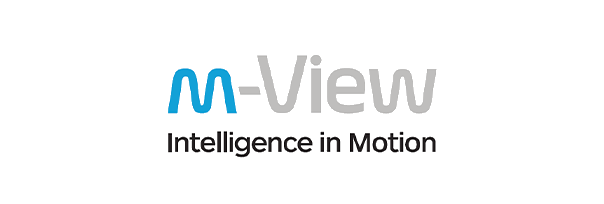How to simplify your expense reporting with digital receipts?
Automation is the future of business. Companies across the globe are leveraging the power of automation and digitization to boost performance and get themselves ahead of the competition. Finance teams in particular are enjoying the many benefits of digitizing accounting and expense management systems.
Therefore, adopting a digital approach to expense reporting is a good place to start your journey towards complete automation. Let’s see how digital receipts can ease your finance teams’ burden and why it’s the way to go in the future of business.
Automate expense reports with e-receipts
Amongst the most notorious manual processes that were once incredibly time-consuming and error-prone is manual expense reporting. The rise of automation, however, has now made this process obsolete. Its upgraded, modernized replacement is automated expense reporting with digital receipts.
Business expense reporting with digital receipts is the future not just because of the long list of accounting problems it solves but also because it’s sustainable. For a business to survive, it has to be fast, efficient, and environment-friendly. Without these qualities, it’s hard to imagine a business surviving in the current economic climate, let alone thriving.

Problems of manual expense reporting
Inaccuracy
Manual expense reporting comes with a host of issues that lead to inaccuracy. The data on physical receipts has to be manually extracted and recorded on a document or spreadsheet. The expenses then have to be matched with these receipts to verify the purchases. At each step, there’s a high risk of information being recorded inaccurately. Receipts might be missing, information on these receipts could be incomplete or ambiguous and finance teams usually have to do a lot of running around to reconcile these expenses manually.
Data error
Erroneous reporting and recording of data is another big problem with manual expense reporting. Given the degree of human intervention required, it’s extremely easy for data to be recorded or calculated incorrectly. Moreover, the employee making the expense might themselves submit incorrect numbers in the reporting form itself. Some other errors manual expense reporting is also susceptible to are double payment of an invoice, duplicate invoices, incorrect payment amounts, payment without any goods or services received.
Delayed reimbursement
The time, labor, and attention required to manually manage business expenses all compounds to delay the expense reimbursement process. The need for physical receipts means that any discrepancy, misplacement, or damage caused to or found within these documents could set back the entire process by hours or even days.
Manual verification of every receipt
Manual expense reporting is not only time-consuming but also highly labor-intensive and expensive. Extra personnel needs to be hired to share the workload. Also, these employees have to take time out to complete mundane administrative tasks. For small business expense reporting, this can be especially detrimental because it harms company funds.
Time consuming
The time required to manually review, reconcile and approve expense reports is also quite extensive. Each expense has to be manually vetted and matched with physical receipts and documents. In case any of the required paperwork is missing or damaged the delays are further extended.
Eliminate manual expense reporting with automation
Benefits of having digital receipts to manage business expense reports
Reduce human errors
When you manage business expenses with digital receipts the degree of human intervention required and, therefore, the number of errors made is drastically reduced. Receipts are captured digitally from where information is extracted and stored safely in an online database that can be accessed anywhere, anytime. No longer do you have to worry about misplaced, damaged, or incomplete receipts or look out for mismanagement of data.
Save time
Whether it’s for a big or small business expense management, time is of the essence. Digital receipts help you cut down on the majority of the manual steps that would have otherwise been required in expense reporting. Moreover, employees don't have to needlessly waste time on submitting forms or receipts. The software takes care of recording the expenses and its supporting documents as and when the purchase is made.
Cloud storage
With digital expense reporting, you also get to enjoy the perks that come with having access to unlimited cloud storage facilities. You can trade in all those document stockpiles and gigabytes of spreadsheets for a storage facility that is unlimited, secure, and can be accessed easily, straight from a mobile or web-based application.
Extract data with the OCR technology
OCR or Optical character recognition is another feature that is capable of cutting the effort and time required to manage business expenses down to a bare minimum. It’s essentially a feature that allows expense management software to digitally extract the information on a physical document from its image and convert it to machine-encoded text.
It can read information from any document whether it is typed, handwritten, or printed text on a scanned document, document photo, or an image with superimposed text on it. OCR eradicates the need to manually enter data from physical documents.
Keep track of every receipt
Digital expense reporting tracks and records each transaction in real-time. It gives you comprehensive visibility of overall expenses being made by your employees and ensures that you can control spending and take immediate punitive steps in case of fraudulent behavior.
Well-organized data
Expense management with digital receipts also means that your receipts and transactions are not only recorded but the information on it is organized. This information is sorted, compiled, and then presented on an expense management platform from where your finance teams can gain valuable insights and analytics on spending.
Real-time reports
With the help of real-time expense reporting at your disposal, you no longer need to wait until the end of a month before you can view and reconcile expenses. Digital business expense reporting services are capable of recording your transactions as and when they are made. These transactions are also immediately sorted and categorized on a separate platform from where you’ll be able to keep a check on spending.
How can Volopay help you with digital receipts for faster expense reporting?
If onboarding digital receipts are good, using Volopay to do so is great. For any business looking to work faster, reconcile expenses better and save time and money, Volopay's business expense reporting is the answer.
1. What details do you have to give?
Most of the information required to report an expense is extracted from the receipt image you provide by OCR. The only information you’ll have to input is in case any data is missing on the receipt itself.
2. How to upload the receipts?
All you have to do is take a photo, upload it on Volopay’s mobile or web-based application and let OCR work its magic!
3. What is a valid receipt?
A valid receipt must include the following information:
- Purchase date
- Name and address of the supplier
- Description of the items, including individual prices and quantities
- VAT, GST, or other taxes, as applicable
- Total price
However, credit card tickets, trip or ride details, order forms, purchase orders are NOT valid receipts.
4. What happens after that?
After you upload the receipt digitally all you need to do is let Volopay take care of the rest. The software will automatically record the expense, extract information from the document, organize it and present it to you in a format from where you can gather insightful information, analytics and, of course, stay audit-ready and protected against fraud.
Related page: Benefits of automated invoice processing for businesses








Trusted by finance teams at startups to enterprises.